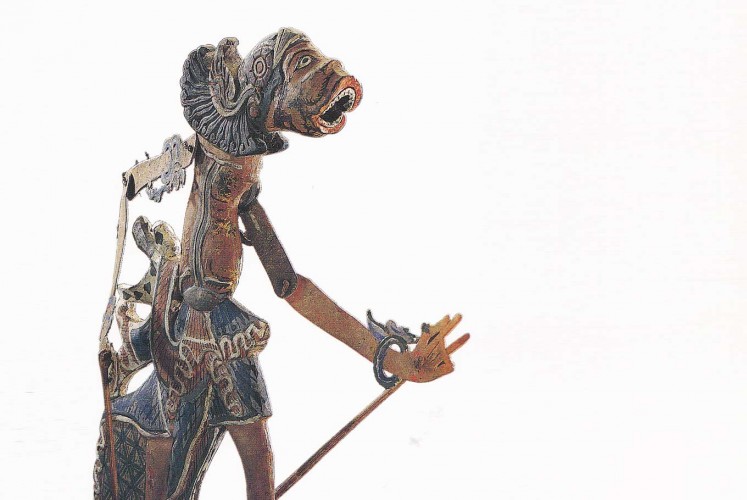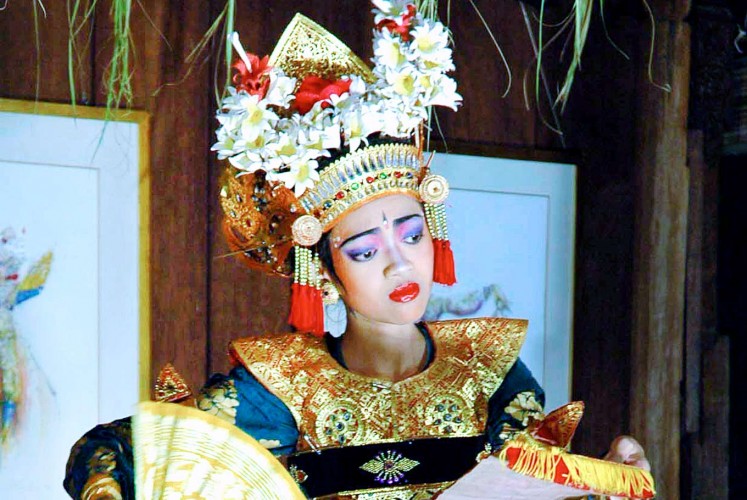Popular Reads
Top Results
Can't find what you're looking for?
View all search resultsPopular Reads
Top Results
Can't find what you're looking for?
View all search resultsThe romantic appeal of Panji
A courtly, romantic tale from ancient Java is on its way to being recognized as part of the world’s heritage.
Change text size
Gift Premium Articles
to Anyone
I
t was the love story that shaped the Javanese versions of chivalry and noblesse oblige. Its beauty and message have been immortalized in songs, poems and dances that are still performed today in Java and Bali. Its influence has spread beyond the borders of the archipelago into Malaysia, Thailand, Cambodia and even India.
Known as Panji, the story narrates the trials and tribulations that Panji Inu, the young prince of Kahuripan, must overcome to reunite with his true love, Chandra Kirana, the princess of Daha. The challenges the young prince must face range from rampaging demons to violent criminals, an elusive tiger, distressed peasants and vindictive gods.
It holds major importance in the Javanese tradition because Panji is believed to be more than just an ordinary prince. He is the ideal knight, who steadfastly defends the weak, pursues the truth and remains faithful to his love. He is also the ideal nobleman, who cares for his subject and excels at both governing and pursuing artistic endeavors.
Read also: Great Indonesian literature: Tales of Panji
Moreover, Panji is credited with creating the first Javanese theater and gamelan orchestra as well as forging the first kris, the iconic wavy dagger that symbolizes gallantry and spirituality in the Javanese tradition. Panji is also known as the protector of batik.
These significances and the fact that Panji has become a shared heritage of Southeast Asia countries was the primary reason behind the ongoing campaign, spearheaded by the National Library (Perpusnas) and former Minister of Education, Wardiman Djojonegoro, to request that UNESCO include the story in its Memory of the World Register.
Gambuh: A photograph taken in the 1930s by prominent ethnomusicologist Colin McPhee shows a Gambuh performance at Sesetan, a village south of Denpasar. (UCLA Ethnomusicologist Archive/File)The register lists documentary heritage recommended by the International Advisory Committee, and endorsed by the Director-General of UNESCO, as corresponding to the selection criteria regarding world significance and outstanding universal value. The decision on Panji’s inclusion on the list is expected to be made later this year.
“Panji is unique because it was created in East Java and was not influenced by Mahabharata and Ramayana, and later on was adopted and assimilated by other regions,” Wardiman said, referring to the two great Hindu epics that heavily influenced the archipelago’s political and cultural landscape prior to the emergence of Islam.
Art scholar Prof. I Made Bandem, who presented a paper on Panji during a seminar on Indonesian literature in 2015 in Berlin, supported the campaign, stating that to a certain extent Panji is the nation’s cultural father figure for his attributed role in inventing gamelan, kris and batik, as well as its own, indigenous superhero.
“Panji is a superhero most importantly because he is a character who was born in the pre-Hindu times and has survived the Hindu, Islam and post-independence eras of this country,” he said.
“The ways the character influenced and was influenced by the values and norms of different eras without compromising its core traits of righteousness and fidelity to a large extent mirror the journey of this archipelagic nation, which for centuries has embraced foreign influences and transformed them into its own rich and diverse culture that stays faithful to its core values.”
Rare: A character from a Wayang Klitik wooden puppet show, which in the past was one of the primary art forms for telling the Panji stories. (Treasures of the National Museum Jakarta/File)Drawing on the multitude of research carried out by influential scholars, such as Poerbatjaraka, AJ Bennet Kempers, Fritz A. Wagner, S.O. Robson and Mantle Hood, Bandem said that the likely origin of the Panji story went back as far as the early Indonesian oral tradition of the kidung, when in pre-Hindu times magical songs and history were carried by singing bards. These early traditions were pushed into the background by Hindu influences in the 8thand 9th centuries, which resulted in a courtly, written literary style.
“The prominence of the Panji story became well established by the 14thcentury during Majapahit times in East Java in the form of the literary kidung. From there it is possible that it spread to Malaysia, Cambodia, Thailand, Bali, Central Java, West Java and the other islands of Indonesia,” he said.
Kidung is an indigenous poetic form better suited to the Javanese language than other poetic forms imported from India, which used Sanskrit-based kawi.Panji stories never use kawi and instead use the Jawa Tengahan language.
Names of places and characters in Panji stories bear similarities with the ones mentioned in Pararaton (Book of Kings), a semi historical account of the rise of two actual kingdoms in East Java — Singasari and Majapahit. Moreover, names and episodes from Panji stories are also found in several inscriptions and ancient reliefs.
Longing: A Legong dancer portrays the sadness of the princess upon learning about her separation from the prince. (JP/I Wayan Juniarta)“There are innumerable versions of the Panji story found in Java, including Kuda Narawangsa, Angron Akung, Panji Cakel Wanengpati, the Serat Kanda[…] the differences from one to another are minor and the principal theme is always the same,” Bandem said.
These stories have been passed through the generations mainly via traditional performing arts. In Central Java they have been passed down through the Wayang Gedog shadow puppets, the nearly extinct Wayang Kelitik wooden puppets, and the Wayang Topeng masked dance drama. In West Java, Panji stories have reached the masses through Wayang Orang and Topeng Babakanmasked dance dramas.
In Bali, Panji stories have become the backbone of some of the island’s most important performing arts, including Gambuh, a dance drama revered as the mother of all Balinese dances, Arja opera and Legong Keraton, arguably one of the most beautiful and complicated Balinese dances.
“Panji narrates both personal and universal struggles that any modern person can relate to and in this context we would be very happy if the world embraced it as our shared heritage,” Bandem said.














